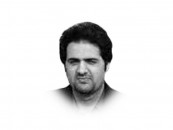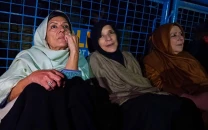ARFC — the strategic vision
.

The announcement of the Army Rocket Force Command (ARFC) on Pakistan's 78th Independence Day did not arrive as a ceremonial statement; it marked a decisive turn in South Asia's shifting balance of power. For decades, Pakistan relied on its nuclear arsenal as the ultimate deterrent, while conventional missile capabilities remained fragmented across different tiers of military commands, often leading to coordination challenges and diluted effect in combat scenarios. That framework has now been reshaped into a coherent structure, one that positions Pakistan's rocket and missile forces under a centralised command falling in the realm of conventional warfare.
Unlike the Strategic Plans Division (SPD), which guards the nuclear triad, this new force stands apart, designed to give the country the flexibility to fight, deter and dominate at the conventional level without crossing the nuclear threshold. The creation of ARFC reflects a recognition that wars in the twenty-first century are not only about possession of destructive power, but about precision, speed and the ability to coordinate across multiple theatres simultaneously. Pakistan has learned this lesson through both its own experiences and from observing conflicts in Ukraine, the Middle East, and even along its own border with India, where short-range and medium-range missiles have redefined the battlefield.
The operational necessity of this command became clear after recent engagements, particularly Operation Sindoor of the BJP-led India, where Pakistan sought to employ drones, rockets and cruise missiles to neutralise high-value Indian targets. A deficiency of a unified command lagging in desired synergy and the saturation effect required to overwhelm enemy radars and interceptors warranted overcoming these predicaments in an imminent future aggression by Pakistan's adversary. By establishing ARFC, Pakistan is directly addressing these operational dictates.
The new command centralises control, allowing for real-time coordination of salvos across multiple platforms, ensuring that rockets and missiles are not just fired but orchestrated as part of a single, overwhelming strike plan. Massed firepower, standardised training, streamlined logistics and integrated intelligence now converge in one structure, elevating Pakistan's conventional warfighting capability to a new strategic level. It is a deliberate response to India's pursuit of space for "limited war" under the nuclear shadow, effectively raising Pakistan's own nuclear threshold by providing powerful non-nuclear options.
At the core of this shift is the modernisation of Pakistan's rocket and missile arsenal. Systems like Fatah-1 and Fatah-2, with ranges of 140 and 400 kilometres, have already proven precision in the battle. The ARFC, however, extends this reach with platforms like the Fatah-4, striking up to 750 kilometres with near-pinpoint accuracy. This allows Pakistan to hit India's command centres, logistics hubs and industrial facilities deep inside its territory without nuclear reliance.
Backed by state-of-the-art satellite system, these missiles gain real-time guidance and the ability to strike even hardened or mobile targets. Such advances transform Pakistan's missiles into scalpel-like tools, capable of proportionate yet devastating strikes. The message to India is clear: any conventional misadventure will invite swift, precise and crippling retaliation – a fact asserted by the Pakistan Army spokesman.
The separation of this command from the nuclear structure is equally significant for regional stability. For years, every missile test or deployment by Pakistan risked being interpreted as a potential nuclear signal, heightening tensions unnecessarily. The ARFC eliminates this ambiguity by being explicitly conventional in nature. This distinction provides Islamabad with a wider menu of response options in times of crisis — options that are powerful enough to punish aggression but limited enough to avoid triggering a nuclear exchange. It also reassures the international community that Pakistan is not seeking to lower its nuclear threshold, but to strengthen deterrence in the conventional domain.
Moreover, it allows the strategic forces to remain focused on its role while the ARFC hones its doctrine through frequent training and live-fire exercises. Such clarity ensures both credibility and predictability in Pakistan's military signalling. In effect, Pakistan has created a firewall between its nuclear and conventional doctrines, demonstrating maturity as a responsible power while simultaneously denying India any room to exploit so-called "limited war" scenarios. This is a significant evolution in strategic thought — one that reshapes the South Asian security environment by reducing the risks of miscalculation while raising the costs of aggression.
Taken together, the formation of the ARFC represents far more than a new military branch. It is a declaration of intent and a signal of confidence. Pakistan is no longer willing to allow India the illusion of conventional superiority or escalation dominance. With precision-guided, long-range, mobile rocket forces under a unified command, Pakistan has effectively closed the gap that adversaries once hoped to exploit. This force multiplier ensures that any aggression will be met with disproportionate cost, not only at the borders but deep within enemy territory, targeting the very infrastructure that sustains war. Beyond its military significance, the ARFC carries symbolic weight as well: it embodies resilience, self-reliance and the ability of a nation under pressure to innovate rather than capitulate. In a region where symbolism often carries as much power as capability, this matters.
For Pakistanis, the announcement on Independence Day was more than a military restructuring; it was a reaffirmation of the state's commitment to their security; a message of strength to adversaries; and a reminder to the world that Pakistan's defence is not static but dynamic, capable of adapting to modern threats with clarity, discipline and resolve. In the evolving theatre of South Asian geopolitics, the ARFC stands as both shield and sword, ensuring that Pakistan enters the next era of competition not as a reactive player but as a nation setting its own terms of deterrence.














COMMENTS
Comments are moderated and generally will be posted if they are on-topic and not abusive.
For more information, please see our Comments FAQ